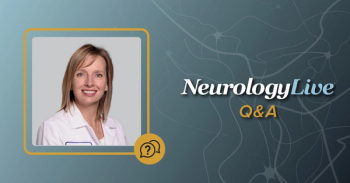
Concomitant Clobazam, Valproate Improves Ganaxolone’s Impact on Motor Seizure Frequency in CDKL5 Deficiency Disorder
Clobazam and valproate, when used concomitantly, produced a greater treatment effect with ganaxolone than other antseizure medications levetiracetam and vigabatrin.
In a post-hoc analysis of the phase 3 MARIGOLD study (NCT03572933), findings showed greater placebo-adjusted reductions in major motor seizure frequency (MMSF) for patients with CDKL5 deficiency disorder (CDD) who were taking concomitant clobazam or valproate with ganaxolone (Ztalmy; Marinus Pharmaceuticals) treatment. Investigators concluded that results may have been confounded by baseline differences in patient characteristics and varying placebo responses, and thus, more research is needed.1
MARIGOLD was a randomized, placebo-controlled trial of patients with CDD aged 2-21 years who received ganaxolone or matching eternal adjunctive placebo for 17 weeks, with change in MMSF as the primary end point. Presented at the
The study included 101 patients, randomized 1:1 to either ganaxolone (n = 50) or placebo (n = 51). Led by Rajsekar R. Rajaraman, MD, MS, an assistant professor of pediatric neurology at the UCLA Mattel Children’s Hospital, the greatest placebo-adjusted percent reductions in MMSF were observed in patients who were taking clobazam (difference, 53.4%; 95% CI, 28.1-83.1) and valproate (difference, 46.1%; 95% CI, 13.4-78.2). Reductions in MMSF were significantly less in the vigabatrin and levetiracetam groups, with recorded placebo-adjusted differences of 15.9% (95% CI, –19.4 to 76.8) and 14.2% (95% CI, –13.2 to 37.3), respectively.
Across the ASM subgroups, the observed treatment-emergent adverse events (TEAEs) and serious AEs were similar. While the rate of somnolence was reportedly higher in ganaxolone-treated patients in the double-blind portion of the study, this rate did not differ by subgroup concomitant medication.
In 2022,
READ MORE:
MARIGOLD, conducted from June 2018 to July 2020, spanned 39 outpatient clinics across 8 countries. All told, results showed a –30.7% (IQR, –49.5 to –1.9) median percentage change in the 28-day MMSF for ganaxolone-treated patients vs –6.9% (IQR, –24.1 to 39.7) in the placebo group (P = .0036). The Hodges-Lehmann estimate of median difference in responses to ganaxolone vs placebo was –27.1% (95% CI, –47.9 to –9.6). Somnolence, pyrexia, and upper respiratory tract infections, the most common AEs recorded, were found in at least 10% of patients on ganaxlone and more frequently than the placebo group.3
The therapy is also being assess in other seizure disorders, including tuberous sclerosis complex (TSC) and Lennox-Gastaut syndrome (LGS). In December 2021, data were presented at the 2021 AES annual meeting from a post hoc analysis of MARIGOLD suggesting treatment with ganaxolone was associated with decreases in MMSF in patients with CDD and comorbid LGS.
Those data, included a total of 7 patients with a codiagnosis of LGS, 2 of which received ganaxolone and 5 who were randomized to placebo. Patients in this subgroup ranged in age from 3 to 19 years, experiencing a median of 88.7 major motor seizures over 28-day increments. During the 17-week open-label extension, investigators observed percent changes in MMSF of –25.4% and –43.5% in the 2 patients who had previously been treated with ganaxolone over the 17-week double-blind period.4
In August 2021, data announced from the
In CALM, treatment with ganaxolone resulted in a median 16.6% reduction in 28-day seizure frequency relative to the 4-week baseline period, the primary end point. Seizure reductions of at least 50% or more were recorded in 30.4% of a patients. Additionally, among a subgroup of 19 individuals with focal seizures, data showed a median 25.2% reduction in seizure frequency.
REFERENCES
1. Rajaraman R, Flatt J, Aimetti A, et al. Effect of concomitant antiseizure medications on the safety and efficacy of ganaxolone for the treatment of seizures associated with CDKL5 deficiency disorder: findings from the phase 3 MARIGOLD study. Presented at: 2023 AES Annual Meeting; December 1-5; Orlando, FL. POSTER 3.272.
2. Marinus Pharmaceuticals Announces FDA Approval of ZTALMY® (ganaxolone) for CDKL5 Deficiency Disorder. News release. Marinus. March 18, 2022. Accessed December 4, 2023. https://www.businesswire.com/news/home/20220318005282/en/Marinus-Pharmaceuticals-Announces-FDA-Approval-of-ZTALMY%C2%AE-ganaxolone-for-CDKL5-Deficiency-Disorder
3. Pestana Knight E, Amin S, Bahi-Buisson N, et al. Safety and efficacy of ganaxolone in patients with CDKL5 deficiency disorder: results from the double-blind phase of a randomized, placebo-controlled, phase 3 trial. Lancet Neurol. 2022;21(5):417-427. doi:10.1016/S1474-4422(22)00077-1
4. Miller I, Nocera R, Aimetti A, Rybak E. Ganaxolone treatment in patients with CDKL5 deficiency disorder with comorbid Lennox-Gastaut syndrome: A post hoc analysis from the Marigold study. Presented at AES 2021; December 3-7, 2021; Chicago, IL and Virtual. Abstract 2.098.
5. Marinus Pharmaceuticals report topline ganaxolone phase 2 open-label results in tuberous sclerosis complex and receives FDA orphan drug designation. News release. August 17, 2021. Accessed December 4, 2023. https://www.biospace.com/article/releases/marinus-pharmaceuticals-reports-topline-ganaxolone-phase-2-open-label-results-in-tuberous-sclerosis-complex-and-receives-fda-orphan-drug-designation/
Newsletter
Keep your finger on the pulse of neurology—subscribe to NeurologyLive for expert interviews, new data, and breakthrough treatment updates.



























